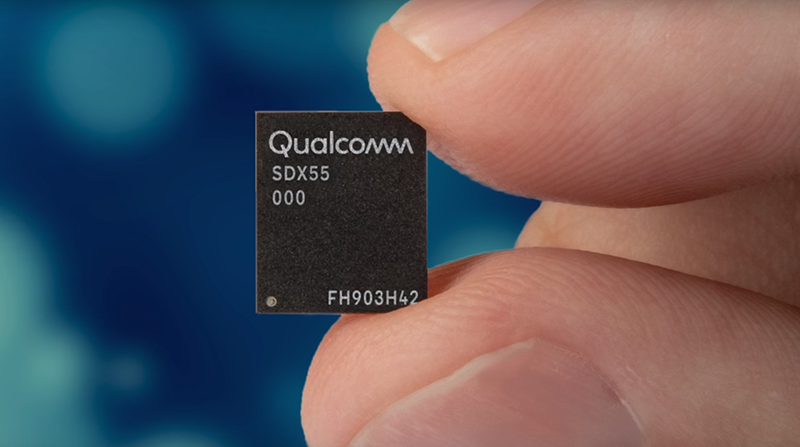Qualcomm Technologies announced Snapdragon X55 5G, its second-generation 5G New Radio (NR) modem. Snapdragon X55 is a 7-nanometer single-chip integrated 5G to 2G multimode modem that supports 5G NR mmWave and sub-6 GHz spectrum bands with up to 7 gigabits per second (Gbps) download speeds and 3 Gbps upload speeds over 5G, and Category 22 LTE with up to 2.5 Gbps LTE download speeds.
The modem is designed for global 5G rollouts with support for all major frequency bands, whether mmWave or sub-6 GHz, supports TDD and FDD modes of operations and is capable of both Standalone (SA) and non-standalone (NSA) network deployments – providing flexibility and enabling virtually all deployment types globally. In addition to deployments in greenfield frequency bands allocated for 5G, the Snapdragon X55 modem is engineered to support dynamic spectrum sharing between 4G and 5G, enabling operators to accelerate 5G deployments by using their existing 4G spectrum holdings to deliver both 4G & 5G services dynamically, said a press release.
“Qualcomm Technologies is spearheading the first wave of 5G launches with our first generation 5G mobile platform. With significant evolution in capabilities and performance, our second generation commercial 5G modem is a true testament to the maturity and leadership of our 5G technology. We expect our 5G platform to accelerate 5G commercial momentum and power virtually all 5G launches in 2019 while significantly expanding the global 5G rollout footprint,” said Cristiano Amon, president, Qualcomm Incorporated.
The Snapdragon X55 5G modem pairs with the newly announced 5G mmWave antenna module (QTM525), a new single-chip 14nm RF transceiver for 5G sub-6 GHz and LTE, and sub-6 GHz RF front-end modules to deliver the next generation modem-to-antenna solution for all major spectrum bands, helping customers to build 5G devices quickly, and at global scale. Snapdragon X55 is designed to bring 5G to a broad range of devices including premium smartphones, mobile hotspots, Always Connected PCs, laptops, tablets, fixed wireless access points, extended reality devices, and automotive applications.













